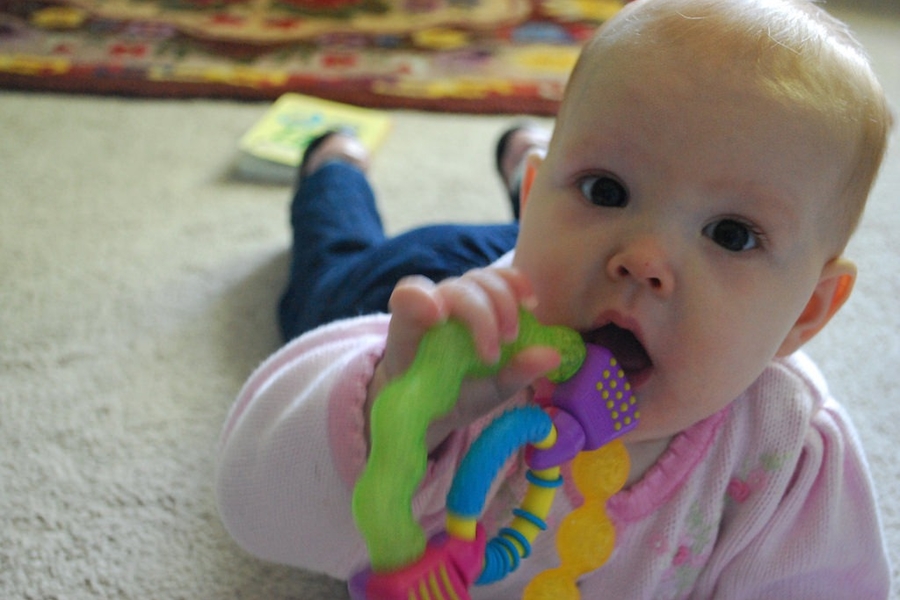
Teething Fever How Is It Different
21 Sep 2018 | 3 min Read
Babychakra
Author | 1369 Articles
The appearance of your baby’s teeth is a growth milestone and you probably can’t wait to see the beautiful smile building tooth by tooth. However, teething is often associated with discomfort and pain. In many children, it may come in the form of a teething fever and it is indeed a rough time for both, the mother and the kid.
Here is everything you need to know about a teething fever and how to mitigate its effects.
The rate of dental development varies for every child, but the lower front incisors usually appear around the 7-8 months mark. The pain and fever also vary for every child.
Does Teething Really Cause a Fever?
While myths say that even a low increase in body temperature is a teething fever, this is not the case. Teething fevers are only a mild rise in temperature from the normal due to the inflammation of gums. A fever above 100 degrees Fahrenheit accompanied by loose stools is most likely another infection that the child may be fighting with. It is best to monitor the fever with a thermometer and consult the doctor if it goes above 100.
The Average Timespan of a Teething Fever
When the first teeth emerge, the gums swell up and cause irritation to the baby. This causes pain and fever that lasts only for a couple of days. It may seem like a long illness because as the other teeth pop up the discomfort tends to return. The intensity of pain and fever goes down with the following teeth, so the first few will usually be the most painful and associated with episodes of crankiness.
Symptoms That Your Baby is Teething
While at that age it is common to associate any bout of crankiness with teething, here is how you can know if it is really teething related pain and fever:
Drooling:
Many children produce excessive saliva when teething. It is a good idea to check if drooling is accompanied by an urge to itch or chew.
Teething rash:
The excessive drooling may sometimes cause chapped lips or redness around the mouth. This is termed as a teething rash.
Biting:
This is a common indicator of teething when the baby tries to bite you or the things easily accessible to him/her. This is because biting tends to soothe the soreness in the teeth.
Crankiness:
Inflammation of the gums may cause fussy behaviour in kids. Crankiness accompanied by a mild fever is often related to teething.
Bleeding from the gums:
Sometimes, tooth eruption may be accompanied with a dark red or purple blister on the gums and bleeding. This is the oozing out of hematoma and resolves itself once the teeth emerge completely.
How to Tell If It Is Not a Teething Fever
The time when your child is slowly developing denticles is also the time when they will be exploring around, catching germs and putting everything in their mouth. The germs may cause common fevers and infections that could be mistaken with teething fever. Here are some symptoms that characterize other illnesses than teething:
- A runny nose or congestion.
- High fever.
- Body rashes.
- Vomiting or loose stools.
These symptoms require a doctor’s attention and must not be dismissed as common teething symptoms.
You can ease a teething fever by comforting the baby’s gums. This can be done by giving them something to chew on or massaging the gums lightly with a cold cloth.
A


Related Topics for you
Suggestions offered by doctors on BabyChakra are of advisory nature i.e., for educational and informational purposes only. Content posted on, created for, or compiled by BabyChakra is not intended or designed to replace your doctor's independent judgment about any symptom, condition, or the appropriateness or risks of a procedure or treatment for a given person.
